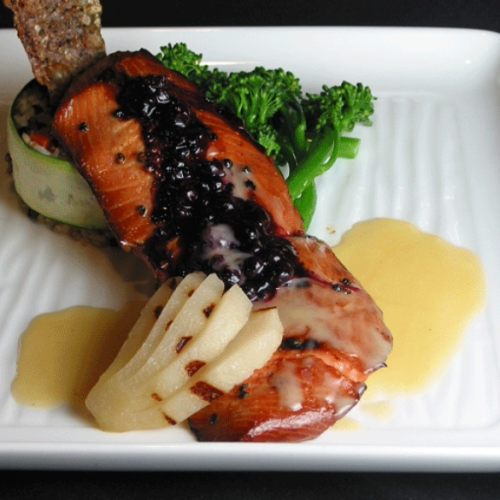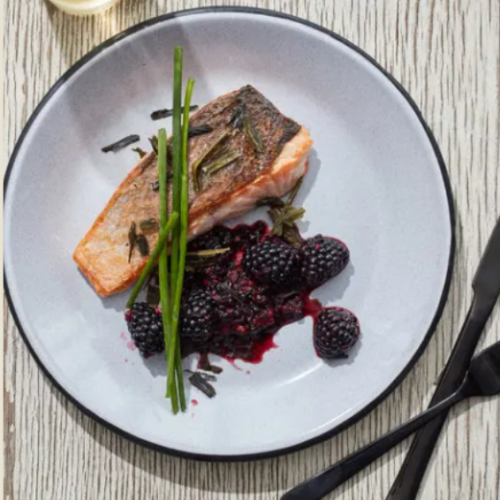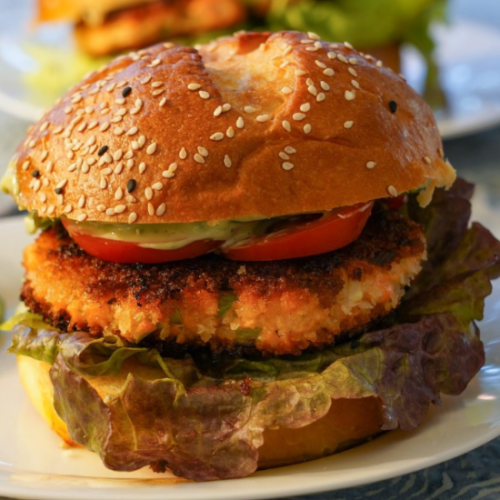Chum Salmon
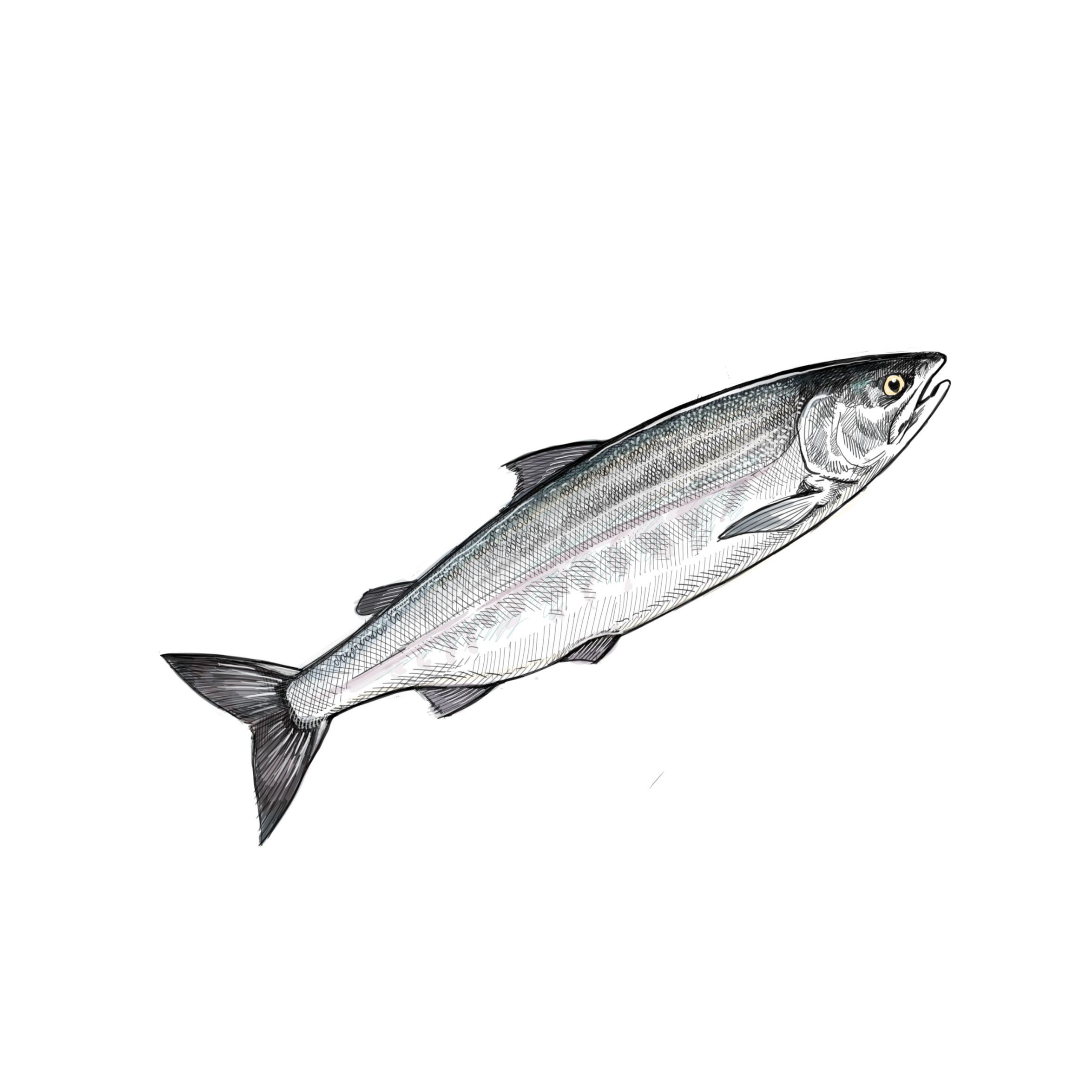
Chum salmon, also called keta or dog salmon, range from Alaska to Yaquina Bay, Oregon. Like most other species of Pacific salmon, chum spend the first stage of their lives in freshwater rivers and streams before migrating to the Pacific Ocean. However, chum salmon spend far less time in freshwater than other salmon species. They are the second-largest species of Pacific salmon, reaching sizes of up to three and a half feet and weighing up to 35 pounds; however their average weight is eight to 15 pounds. In the ocean, chum salmon are green-blue with black spots. They prey upon copepods, fish, mollusks, squid and tunicates. Chum salmon will return to the stream where they were born to spawn the next generation of fish at about three to six years old. When they reenter freshwater, they develop a darkened lateral bar area and a tiger stripe pattern, and males develop large teeth that resemble canine teeth.
Pacific salmon species occupy a unique niche in both ecological and cultural landscapes. Indigenous nations along the West Coast historically subsisted on salmon, and some present-day Indigenous peoples celebrate the significance of the species in First Salmon ceremonies. Chum salmon remains an economically and culturally important resource for West Coast Indigenous nations.
Overall availability
Chum salmon is fished in Washington. It is available fresh seasonally, with the peak harvest occurring from late summer to early spring, and available year-round canned, smoked, or frozen. Caviar can also be made from salmon roe.
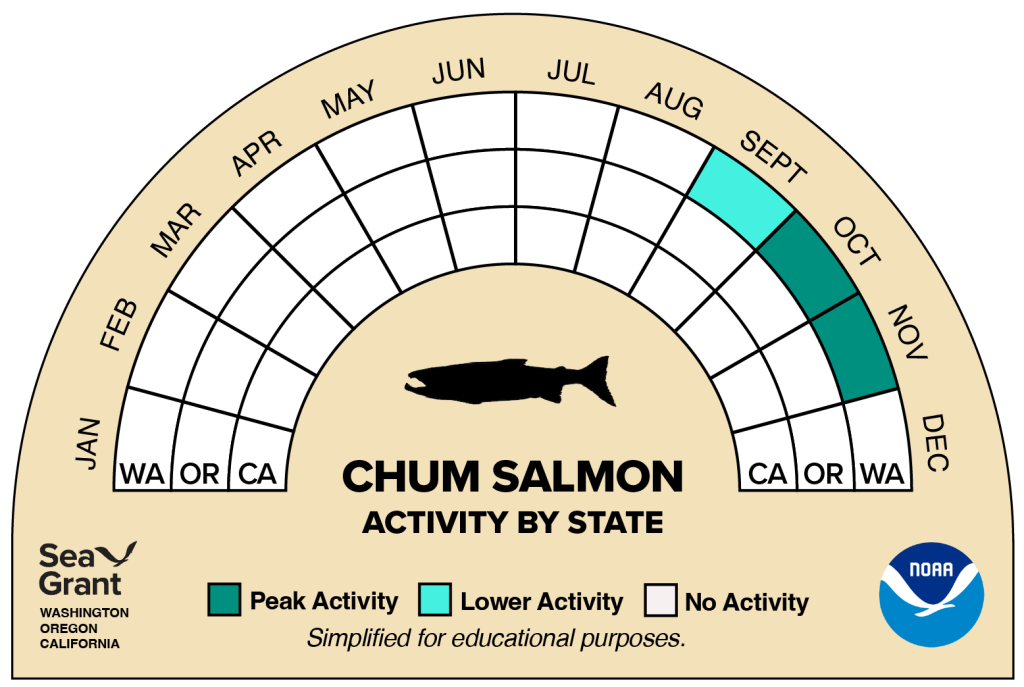
Management
Chum salmon are fished in Washington using gillnets, troll and purse seine gear, respectively. Management of salmon fisheries is highly cooperative between NOAA Fisheries, The Pacific Fishery Management Council, and Pacific Salmon Commission. Coastal, Puget Sound, and Willapa Bay and Grays Harbor chum salmon fisheries are co-managed between Washington Department of Fish and Wildlife and Treaty Tribes, represented by the Northwest Indian Fisheries Commission and the Columbia River Intertribal Fisheries Commission.
More Information
Other Common Names: Keta salmon, Dog salmon




